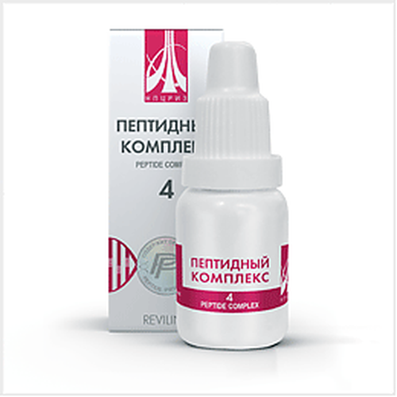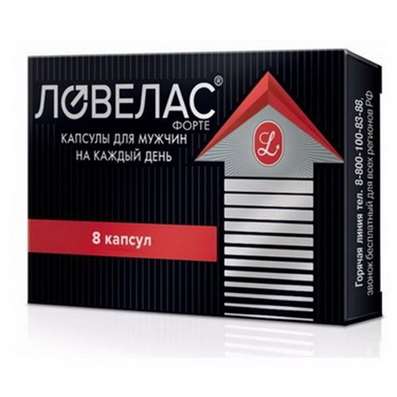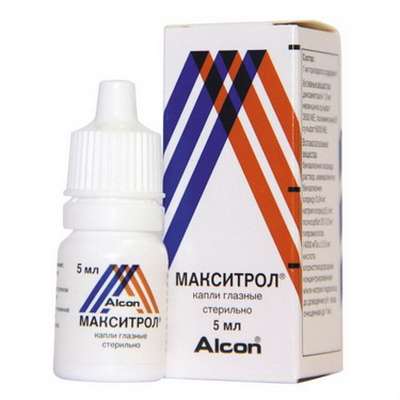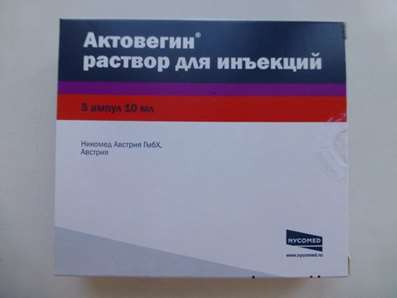Instruction for use: Neulastim
I want this, give me price
Dosage form: Solution for subcutaneous administration
Active substance: Pegfilgrastimum
ATX
L03AA13 Pegfilgrrastim
Pharmacological group:
Leukopoiesis stimulant [Stimulators of hemopoiesis]
The nosological classification (ICD-10)
D71 Functional disorders of polymorphonuclear neutrophils
D72 Other disorders of white blood cells: Lymphocytopenia; Hereditary neutropenia
Y43.3 Adverse reactions in the therapeutic use of other antitumor drugs
Composition and release form
Solution for subcutaneous injection of a syringe tube of 0.6 ml
Pegfilgrastim 6 mg
Excipients: sodium acetate; sorbitol; Polysorbate 20; water for injections
In a syringe tube of 0.6 ml, complete with a needle for injection; In a cardboard bundle 1 set.
Description of dosage form
Transparent colorless liquid.
Pharmachologic effect
Mode of action - hematopoietic.
Pharmacodynamics
Hematopoietic growth factor.
Pegfilgrastim is a covalent conjugate of filgrastim, a recombinant human granulocyte colony-stimulating factor (G-CSF), with a single molecule of polyethylene glycol (PEG) 20 kDa, with a prolonged effect as a result of decreased renal clearance. Similar to filgrastim, pegfilgrastim regulates the formation and release of neutrophils from the bone marrow, markedly increases the number of neutrophils with normal or increased functional activity (chemotaxis and phagocytosis) in the peripheral blood for 24 hours and causes a slight increase in the number of monocytes and / or lymphocytes.
Like other hematopoietic growth factors, G-CSF can stimulate endothelial cells in vitro.
Transient increase in leukocytes (leukocytosis) is an expected consequence of pegfilgrastim therapy, because Corresponds to its pharmacodynamic effects. Any side effects directly related to such leukocytosis are not described.
A single administration of pegfilgrastim after each cycle of myelosuppressive cytostatic therapy reduces the duration of neutropenia and the incidence of febrile neutropenia, similar to the daily administration of filgrastim (an average of 11 daily administrations).
Pharmacokinetics
After a single administration of Tmax pegfilgrastim - 16-120 h. The concentration of pegfilgrastim in the serum is maintained during the neutropenia period after myelosuppressive chemotherapy.
The distribution of pegfilgrastim is limited by plasma.
The derivation of pegfilgrastima is nonlinear, dose-dependent, saturable. Clearance is mainly carried out by neutrophils (> 99%) and decreases with increasing dose of pegfilgrastim. In accordance with the self-regulating mechanism of clearance, the concentration of pegfilgrastim in the serum rapidly decreases with the onset of recovery of the number of neutrophils.
Pharmacokinetics in specific patient groups
Given the clearance with neutrophils, it is likely that the pharmacokinetics of pegfilgrastim does not change with renal or hepatic insufficiency.
Elderly age. The pharmacokinetics of pegfilgrastim in patients older than 65 years is similar to pharmacokinetics in adults.
Indication of the drug Neulastim
With cytotoxic chemotherapy for malignant diseases to reduce:
Duration of neutropenia;
Frequency of febrile neutropenia;
The incidence of infections manifested by febrile neutropenia.
Contraindications
Hypersensitivity to proteins obtained using E.coli, filgrastim, pegfilgrastimu or any other component of the drug;
Neutropenia in chronic myelogenous leukemia and myelodysplastic syndromes;
Acute leukemia;
To increase the doses of cytotoxic chemotherapy higher than those established in dosing regimens;
Simultaneous administration with cytotoxic chemo- and radiotherapy;
pregnancy;
The period of breastfeeding;
Age to 18 years.
Carefully:
Malignant and premalignant diseases of a myeloid nature (including acute myelogenous leukemia de novo and secondary);
In combination with high-dosage chemotherapy;
Sickle-cell anemia.
Side effects
Very frequent (≥10%) and frequent (≥1%, <10%) side effects.
On the part of the musculoskeletal system: very often - weak or moderate pain in the bones, which in most cases pass independently or are stopped by usual analgesics; Often - arthralgia, myalgia, back pain, limbs and neck.
The body as a whole: often - chest pain (non-cardial), pain, fever.
Hypersensitivity reactions: rarely - anaphylaxis, rash, hives, angioedema, dyspnea and hypotension, erythema and hyperemia at the beginning or subsequent administration. Sometimes the resumption of treatment is accompanied by a relapse of symptoms. If serious allergic reactions develop, appropriate treatment should be prescribed with careful monitoring of the patient for several days. It is necessary to stop pegfilgrastim therapy with the development of serious allergic reactions.
From the nervous system: often - a headache.
Local reactions: pain at the injection site.
On the part of the respiratory system: cough, dyspnea, infiltrates in the lungs, dyspnoea, respiratory distress syndrome.
On the part of the organs of hematopoiesis: splenomegaly, pain in the upper left quadrant of the abdomen; Rarely - thrombosis of blood vessels; Very rarely - rupture of the spleen (in some cases with a fatal outcome), leukocytosis.
From the digestive tract: nausea.
From the skin and subcutaneous fat: rare cases of acute febrile dermatosis (Sweet syndrome).
On the part of laboratory indicators: reversible, weak or moderate clinically insignificant increase in uric acid, alkaline phosphatase and LDH.
Interaction
Cytotoxic chemotherapy: Because of the possible sensitivity of rapidly dividing myeloid cells to cytotoxic therapy, Neulastim should be administered 24 hours after the administration of cytotoxic chemotherapeutic agents. In clinical trials, the drug was safely applied 14 days before the administration of cytotoxic chemotherapeutic agents.
5-Fluorouracil or other antimetabolites: potentiation of hematopoietic suppression in vivo.
Interaction with other hematopoietic growth factors and cytokines is not known.
The possibility of interaction with lithium, which also promotes neutrophil release, has not been specifically investigated. There is no confirmation that this interaction can be dangerous.
Studies devoted to specific interactions or metabolism were not conducted.
Signs of interaction are not Resistant to other drugs at present not recorded.
Incompatibility: Unbalanced is incompatible with solutions of sodium chloride.
Dosing and Administration
Adults (≥18 years)
SC, 6 mg (one syringe tube) 24 hours after each cycle of cytotoxic chemotherapy.
Special groups of patients
Children: recommendations for the use of Neulastim in children and adolescents under the age of 18 years are not (not enough data).
Instruction for use, handling and destruction
Syringe tube with drug Neural is intended for single use only.
Neulastim is a sterile solution without preservatives.
Before administration, Neulastim solution should be examined for presence of foreign visible particles. It is allowed to use only a clear and colorless solution.
Excessive shaking can destroy pegfilgrastim, making it biologically inactive.
Before injection, the solution in the syringe should be warmed to room temperature.
Any unused product or its residues should be destroyed in accordance with sanitary requirements.
The drug Unbalance can be stored at room temperature (not above 30 ° C) for a maximum of a single period of not more than 72 hours.
Unlabeled drug, exposed to room temperature for more than 72 hours, should not be used.
The accidental single (less than 24 hours) exposure to negative temperatures does not adversely affect the stability of Neulastim.
Overdose
With a single administration of the drug at a dose of 300 μg / kg, no serious adverse events occurred in healthy volunteers or in patients with non-small cell lung cancer. Side effects during an overdose did not differ from side effects during the usual use of the drug.
Special instructions
Treatment with Neulastim should be carried out only under the supervision of an oncologist or hematologist with experience in the use of G-CSF.
Limited data suggest that the efficacy of pegfilgrastim and filgrastim is the same with respect to the time to stop severe neutropenia in patients with acute myeloid leukemia de novo. However, caution should be exercised in treating Neulastim in patients with acute myeloid leukemia de novo, since long-term results of such therapy are not established.
G-CSF stimulates endothelial cells and can accelerate the growth of myeloid cells, including malignant cells, and some non-myeloid cells in vitro.
Neural should not be used in myelodysplastic syndromes, chronic myelogenous leukemia, secondary acute myelogenous leukemia, since the safety and efficacy of the drug in these patient groups were not assessed. Especially careful differential diagnosis between blastotransformation in chronic myelogenous leukemia and acute myeloid leukemia.
Safety and efficacy Neulastim in patients with acute myeloid leukemia de novo younger than 55 years with translocation t (15; 17) have not been studied.
Safety and efficacy of Neulastim in patients receiving high-dose chemotherapy have not been studied.
Cough, fever and shortness of breath, combined with radiographic infiltrative changes, impaired lung function, and an increase in the number of neutrophils may serve as signs of respiratory distress syndrome (RDS) in adults. In such a case, at the discretion of the doctor, Neural should be canceled and appropriate treatment should be prescribed.
Very rare cases of rupture of the spleen after the application of pegfilgrastim, some with fatal outcome, are recorded. You should carefully monitor the size of the spleen. It should be possible to splenomegaly or rupture of the spleen in patients with complaints of pain in the upper left part of the abdomen and / or in the upper part of the left shoulder.
Monotherapy with Neulastim does not exclude the development of thrombocytopenia and anemia in the continuation of myelosuppressive chemotherapy in a full dose. It is recommended to regularly determine the number of platelets and hematocrit.
Neutral should not be used to increase the doses of cytotoxic chemotherapy above those established in dosing regimens.
The development of sickle cell crises was associated with pegfilgrastim therapy in patients with sickle cell anemia. Pagfilgrastim therapy in patients with sickle cell anemia should be conducted with caution only after a careful assessment of the potential risk and benefit.
Leukocytosis 100 · 109 / L or more is observed in less than 1% of patients receiving Neurastim, is temporary and is usually observed 24-48 hours after drug administration in accordance with its pharmacodynamic effects. Any side effects directly related to such leukocytosis are not described. The safety and efficacy of pegfilgrastim in the mobilization of peripheral blood stem cells in patients were not appropriately evaluated.
The increased hematopoietic activity of the bone marrow in response to therapy with growth factors leads to transient positive changes in the visualization of the bones, which should be taken into account when interpreting the results.
Storage conditions of the drug Neulastim
In the dark place at a temperature of 2-8 ° C (do not freeze).
Keep out of the reach of children.
Shelf life of the drug Neulastim
2 years.
Do not use after the expiry date printed on the package.

 Cart
Cart





